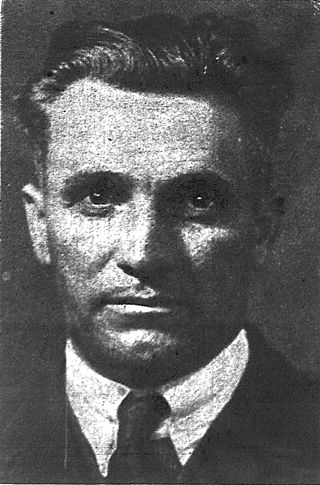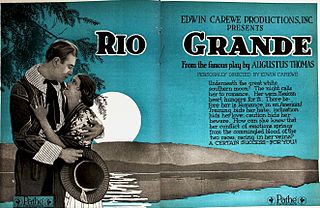Related Research Articles

Samuel Alfred De Grasse was a Canadian actor. He was the uncle of cinematographer Robert De Grasse.

Frank Borzage was an American film director and actor. He was the first person to win the Academy Award for Best Director for his film 7th Heaven (1927) at the 1st Academy Awards.

Frank William George Lloyd was a Scottish-American film director, screenwriter, producer and actor. He was among the founders of the Academy of Motion Picture Arts and Sciences, and was its president from 1934 to 1935.

Charles G. Rosher, A.S.C. was an English-born cinematographer who worked from the early days of silent films through the 1950s.

Robert Zigler Leonard was an American film director, actor, producer, and screenwriter.

Arthur Charles Miller, A.S.C. was an American cinematographer. He was nominated for the Oscar for Best Cinematography six times, winning three times: for How Green Was My Valley in 1941, The Song of Bernadette in 1944, and Anna and the King of Siam in 1947.

Bessie Barriscale was an American actress who gained fame on the stage and in silent films.

William Russell was an American actor, film director, film producer and screenwriter. He appeared in over two hundred silent-era motion pictures between 1910 and 1929, directing five of them in 1916 and producing two through his own production company in 1918 and 1925.

Robert Newhard, also known as Robert S. Newhard, Robert Newhardt, or Robert Newhart, was an American cinematographer.

Herbert Blaché, born Herbert Reginald Gaston Blaché-Bolton was a British-born American film director, producer and screenwriter, born of a French father. He directed more than 50 films between 1912 and 1929.

Virgil Miller was an American cinematographer who was the director of photography for 157 films between 1917 and 1956.

Lawrence Dallin "Dal" Clawson was a cinematographer in the United States who founded the American Society of Cinematographers.

Lillian Case Russell, often credited as L. Case Russell, was an American screenwriter during Hollywood's silent era. She was married to actor John Lowell Russell.
Allen G. Siegler was an American cinematographer who lensed nearly 200 films and television episodes between 1914 and 1952. He worked at Columbia Pictures for many years, and was an early member of the American Society of Cinematographers.
Philip Hatkin was a Latvia-born cinematographer who worked in Hollywood during the early silent era. He shot dozens of films between 1915 and 1921. He frequently collaborated with directors like George Archainbaud and Harley Knoles.

Allen M. Davey was an Academy Award–winning American cinematographer who had a long career in Hollywood, starting in the silent era and going through the mid-1940s. He was an early member of the American Society of Cinematographers and a longtime director of photography at Technicolor.

Allan Sears was an American film actor who played leading roles in the 1910s and 1920s before transitioning into character roles in the 1930s. He was noted for his tall stature.
Duke Hayward was a British cinematographer who worked in Hollywood during the silent era. His career was cut short by his untimely death in 1918 at the age of 38 from the Spanish flu.
Pallas Pictures was a film studio in the U.S. headed by Frank A. Garbutt. In 1913 the film production company Bosworth Incorporated was founded to release film adaptations of Jack London's stories. Hobart Bosworth was President of the company but as Jack London wrote, "Mr. Garbutt has absolute charge of the entire business of Bosworth, Inc." The company rented studio space until September 1914 when Bosworth Inc. constructed its own studio at 211 N. Occidental Blvd., Los Angeles. When Hobart Bosworth left in 1915 Garbutt assumed full control of Bosworth Inc. Several months later the company was renamed Pallas Pictures, with Melodile Garbutt listed as president of Pallas Pictures. The Pallas logo was a capital "P" with an owl on a branch.
Friend Baker was an American cinematographer who worked in Hollywood in the 1910s and 1920s. Later on in his career, he worked as a camera technician. He was an early member of the American Society of Cinematographers.
References
- ↑ Mavis, Paul (2015-06-08). The Espionage Filmography: United States Releases, 1898 through 1999. McFarland. ISBN 978-1-4766-0427-5.
- ↑ Cinema News. 1916.
- ↑ "Prominent Cameraman R.E. Irish and Wife Leaving for Tour of the Orient". The Los Angeles Times. 1 Oct 1922. Retrieved 2019-12-02.
- ↑ "The Love Girl". The Wichita Daily Eagle. 25 Jul 1916. Retrieved 2019-12-02.